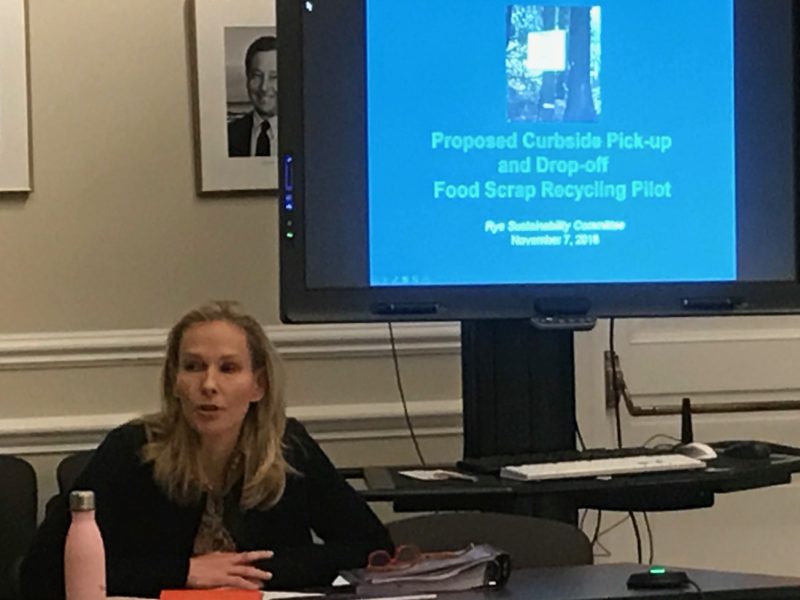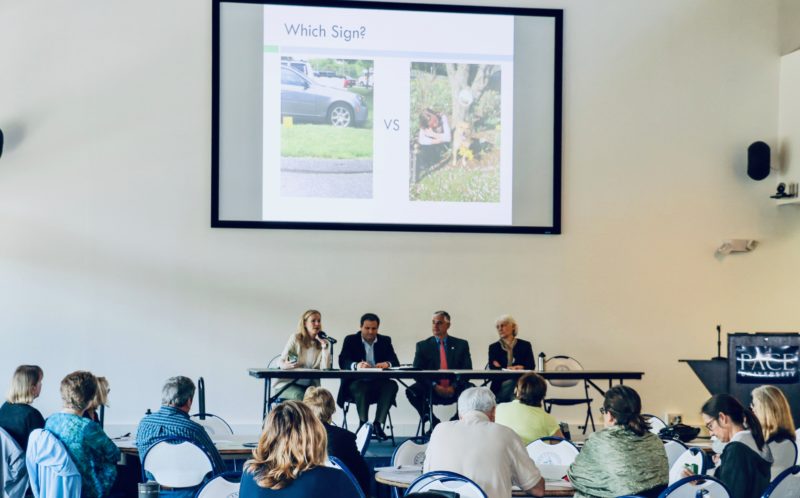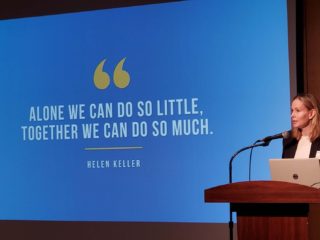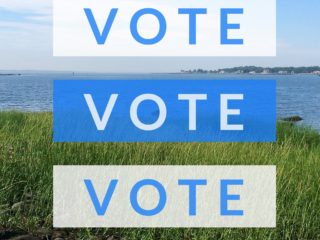A Story Before I Dive in on How to Take Action
I remember a luncheon I attended years ago to benefit medical research on the health effects of pesticide use in children. The large room was packed with hundreds of people, mostly women. Many had been invited by a benefit committee member and probably knew little about the cause but were there to support a friend. Most likely they were mothers who cared deeply about their children yet were unaware of the health implications associated with synthetic chemicals.
All in all, it was a perfect opportunity to raise awareness with a new group of people and encourage them to make a change in their personal lawn care choices.
I was seated at a table with ten women I know well, the majority of whom did not practice natural lawn care. While enjoying our lunch, a panel of researchers and doctors from top medical institutions launched into a 30 minute presentation about the devastating health problems associated with synthetic lawn chemicals.
We heard about birth defects, endocrine disruption, cancer, brain tumors, ADD, mental health problems, feminization and chemical castration, reproductive tract malformations … This accounting of health horrors was accompanied by even more disturbing charts, graphs, and heartbreaking images of diseased children.
The room grew silent, and as the experts finished I remember thinking that surely this excellent and profoundly moving presentation would motivate people to make a change. I had visions of everyone racing home to rid their homes of toxic chemicals.
What happened next, however, was completely unexpected, but a transformative moment for me. As we got up to leave, one of the women at my table said to the group, “Ugh, that was too much … I don’t even know where to begin.” Another replied, “I know! We’re all going to get sick in the end from one of these horrible ailments. Best to do nothing.” A number of them nodded in agreement, and then they left.
I drove home, numb and deflated. How on earth, I wondered, could the message not have gotten through to these smart, thoughtful women?
Why do I tell you this? Well, this episode taught me that no matter how gripping the message, it can easily be lost if the delivery and content are inappropriate for the targeted audience. And of course, if you want to convince people to take action with you, you need to figure out how to expand your group of supporters. So let me show you how to do this and more!
The Power of Storytelling to Inspire Action
How do you inspire the “unlikely activist” to take action with you? One effective way is to appeal to people’s emotions.
Unlike the medical experts at the luncheon who spoke only in abstract terms, tell a compelling, personal story that’s meaningful to your listeners. Draw them in to your cause to motivate them to join you on this journey.
The Power of Connecting With People
How many times have you pressed “delete” when a mass email comes in asking for something? But if you receive a personal ask from a friend, you’ll open the email and at least read it, right? And what if that friend asks for a few minutes of your time to talk or meet? Once you get past that initial I-don’t-have-time feeling, you’ll probably agree to meet or talk.
Strive to make that personal connection, because that’s when you’ll have the best chance to engage and enlist people to your cause. Show them why your cause is important to them and offer a positive vision of what’s possible.
Of course there’s a role for connecting online and via social media. I cover that below. Just don’t discount the importance of human connections to inspire others to join you.
The Power of Partnerships

It’s so important to form partnerships and alliances with groups and individuals. There’s vastly more power together, united, than as a single voice – even if that single voice is a large, influential group. The benefits include:
- A sounding board. It’s difficult to take action and know whether you’re on the right track. Partners will give you feedback and (hopefully!) constructive criticism.
- Credibility. Teaming up with other individuals and partners demonstrates clout for your cause and helps enlist others to join you.
- Pooling resources. Practically speaking, it makes sense to partner with others to expand your volunteer base, share event space, and increase funds.
The Power of Perseverance

Never give up … It’s common sense but it’s absolutely true.
This will sound strange, but when I give advice to groups that want to take action and make a change I tell them they should act like that monster in the horror movie. You know, the one that the hero drives a stake in and then two minutes later, it pops up, ready to go at it again? It never seems to go away …
The lesson is, if you want it, it’ll happen, but it may not happen the first, second, or even 10th time you try. Learn from your mistakes, find a different approach or way of delivering your message. Get back up and keep at it. Never go away… I’ve waited years for certain initiatives to materialize, but they eventually get done!
The Power of (Diverse) Messaging

Spread the message. Personal is best, but social media is terrific. And it’s free. The key is to spread your message in as many forms, formats, and platforms as possible.
Visuals are important. For Rye Sustainability’s Healthy Yard Program I created a photo gallery on the RSC website of residents’ healthy yards. It was so simple to do, but it conveyed effectively the intended message that a healthy yard is also a beautiful yard.
Delivery. It’s important to recognize that sometimes you aren’t the best person to deliver the message to a particular group. Ask others to speak for you or broadcast through their platforms. Try to get a local news outlet to run a story on your initiative. Or enlist other groups to speak out: for example, with a plastic straw pollution awareness campaign, a local boy scouts group spread the message through their project to sell metal straws.
Just Start! Small Steps Lead to Big Changes

Over the years, there’s a fatalistic type of complaint I’ve heard from some naysayers. When I was advocating for my town’s plastic bag law I heard it a lot! It goes something like this:
- “There are far greater environmental problems – air pollution, climate change, fracking – why bother to ban plastic bags?”
- Or there’s this variant: “What difference will it make if it’s just banned in our town of 16,000 people? With 7 billion people using plastic bags, this problem is too difficult to solve.”
- My favorite: “You aren’t doing enough. Why aren’t you pushing to ban all plastic single-use disposables? Adding a paper bag fee? Solving world hunger?”
My response: you have to start somewhere. And if others think your group’s initiative isn’t doing enough, ask them to join you in helping to make it better. If you stick with a positive, meaningful message, you’ll find that people will sign on. Even better, they’ll be inspired to take action by starting their own cause.
The bottom line is that someone has to be the one to say, let’s go for it. Who better to do that than you?
Share Ideas and Create a Network

If you’re successful, it’s important to share your experience, offer best practices, and agree to help others take action.
After Rye Sustainability advocated for and passed the first plastic bag law in Westchester, NY, I shared our success story and lessons learned with other groups and individuals who were interested in doing the same.
There was nothing more gratifying than watching other communities take action and pass their own laws. Some were even able to use the Rye law as a stepping stone to launch into more comprehensive legislation.









